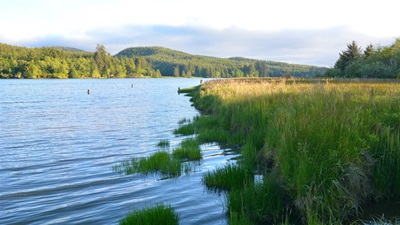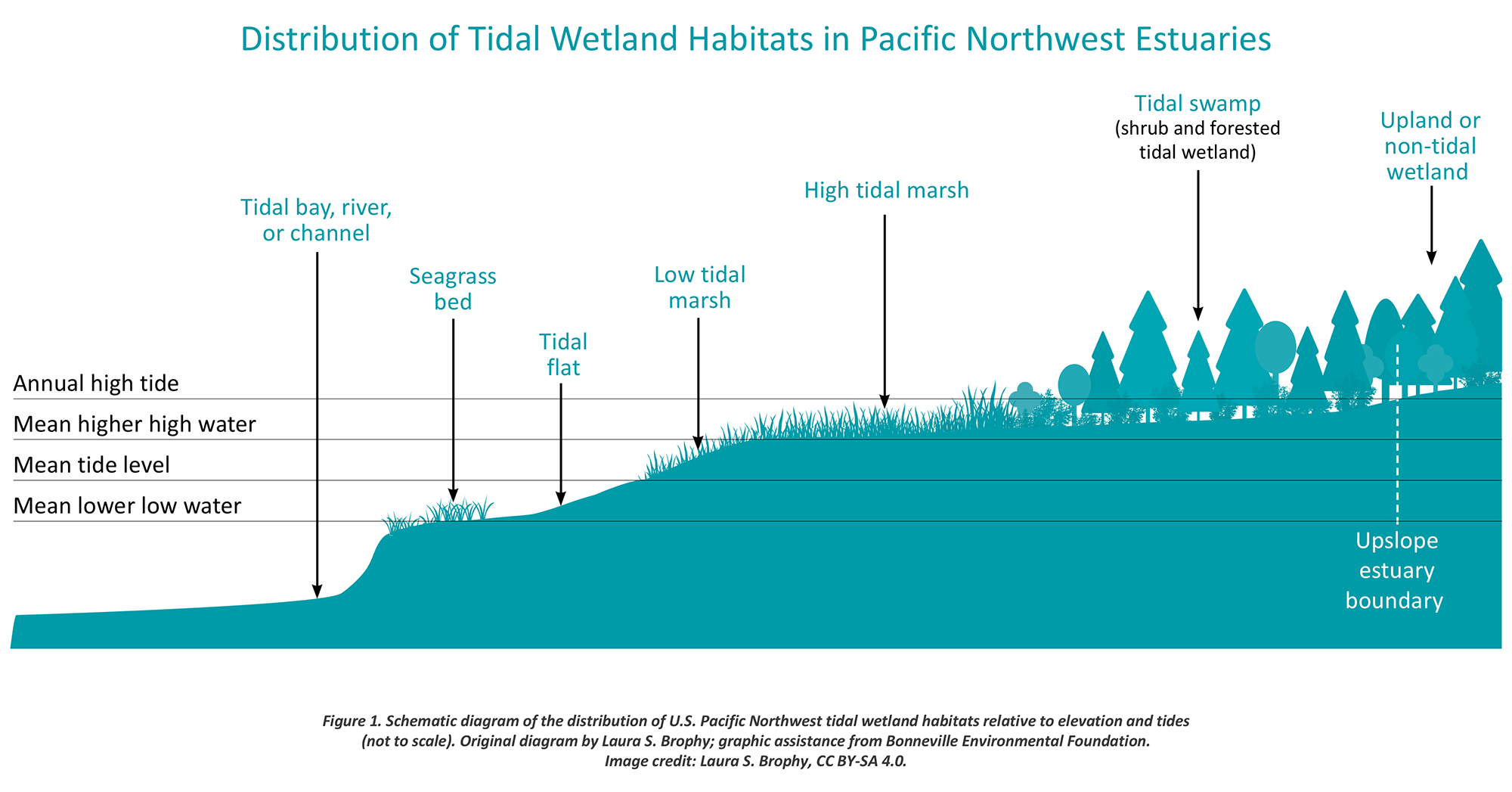What Are Oregon’s Tidal Wetlands Worth?
New guide and studies offer roadmap for quantifying the many benefits to people and nature

Swamps, marshes, mud flats, and scrub-shrub wetlands may not inspire lyrical poetry or odes to planet Earth. But these and other tidal wetlands along the Oregon coast are vital transition zones between river and sea, helping to reduce flooding and buffer communities against sea-level rise. These ecosystems also improve water quality, sequester vast amounts of carbon, moderate water temperature, and provide exceptional wildlife habitat for species such as salmon that have commercial, recreational, and cultural value.
But community-driven initiatives to help quantify the benefits of specific tidal wetland habitat protection and restoration projects can be complex.
To help determine the value of Oregon’s tidal wetlands, researcher Graham Shaw, in partnership with the Bonneville Environmental Foundation and Pew, created a guide that includes a step-by-step process for quantifying the benefits that tidal wetland restoration projects provide.
The team wrote the guide, titled Unlocking the Socioeconomic Value of Oregon’s Tidal Wetlands, in part because of requests from coastal planners and restoration practitioners in and outside of Oregon to describe the methods used in a 2021 study of a tidal wetland restoration project in Oregon’s Tillamook Bay. In that study, Shaw and co-author Steven Dundas of Oregon State University showed multiple benefits from tidal wetlands restoration in Tillamook County, including:
- A rise in home values near restoration sites.
- Increased usage of the area by salmon and other wildlife.
- Reductions in flood-related damage and travel delays.
- Improved water quality.
- Cost savings by reducing the need to dredge the bay.
- Increased walking, fishing, kayaking, birdwatching, and educational opportunities.
“We kept getting calls from people who wanted to better understand the valuation process and how best to synthesize economics, natural systems, and community values into a cohesive story for decision-making,” said Shaw.
The guide provides details on Oregon's tidal wetlands—for example, the types and how they’re managed—and offers options for setting goals for evaluating wetlands, engaging the broader community on planning, and selecting what ecosystem services to analyze. The guide also explains socioeconomic valuation methods.
"Socioeconomic valuations [of nature] are very important and also complex,” said Shaw. “I wanted to create a tool that a local planner, who already does a very complex job, can engage with to see what options for wetlands are available to them and their community."
Oregon, like much of the West Coast, has lost most of its tidal wetlands because of the construction of dikes, levees, and tide gates. And recent research reveals the true extent of tidal wetland habitat loss. Many of Oregon’s estuaries are bordered by steep, forested hillsides or developed land, which limits how many tidal wetlands and other habitats could migrate inland as seas rise. This limitation, often referred to as “coastal squeeze,” coupled with development pressure, is projected to cause more wetland loss, which in turn would compromise how well these habitats can protect people and wildlife from the threats noted above.
Pew is supporting Oregon coastal communities in their efforts to sustain the benefits that estuaries provide, while managing for the future. This includes advocating for updates to the local government’s estuary management plans (EMPs), which are developed in concert with the state Department of Land Conservation and Development (DLCD). EMP updates help communities adapt and prioritize areas for conservation or development.
Progress on tidal wetlands and estuary management
Several recent initiatives offer hope for Oregon’s tidal habitats, including:
- Oregon’s DLCD and its local, state, federal, and Tribal partners have benefited from new funding for tidal wetland restoration in recent years.
- Nonprofit organizations, such as coastal watershed councils, the Oregon Coalition of Land Trusts, the Oregon Shores Conservation Coalition, Trout Unlimited , The Nature Conservancy and many others are prioritizing collaborative restoration and advocacy to protect and reconnect tidal wetlands.
- Since 2021, DLCD has engaged residents to develop estuarine resilience action plans. Coos and Tillamook counties have plans with Lincoln and Lane counties slated to finalize later this year.
- In October, the city of Newport became the first city in Oregon to adopt a new estuary management plan in more than 40 years and signed a resolution committing to climate planning for Yaquina Bay. The plan has new policies that could protect cultural resources and requires developers to perform climate vulnerability assessments for all projects in the estuary.
- In May, the Oregon Coastal Management Program at DLCD released its draft 2026-2030 Program Enhancement Assessment and Strategy, which describes tidal wetland and estuary planning as one of three strategy priorities.
Even with these promising developments, funding remains a challenge. Pew encourages the Oregon government to reinvest in estuary management planning, and in the science, policy, and collaboration needed to protect the state’s coastal people and nature. Later this year, the state will publish a guidance document to help city and county planning departments update their estuary management plans. Given the present and future impacts of sea-level rise, coastal erosion, and storm surge, Oregon Governor Tina Kotek and other state leaders can play a key role in ensuring that city and county planners have the resources to turn this guidance into action.
Bobby Hayden works on The Pew Charitable Trusts’ U.S. conservation project.














